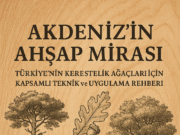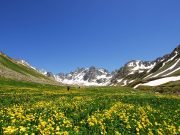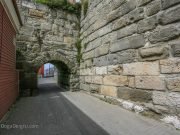Slow City Movement In 1999, on the initiative of Paolo Saturnini, the former mayor of Greve in Chianti, in Tuscany, Italy, it came out of the idea that cities should evaluate themselves and put forward a different development model in order to improve the quality of life. Carlo Petrini, the founder of the Slow Food network, who took part in the first meeting, and 4 small districts. Chianti, Orvieto, Bra And Positano The text signed by the municipalities also laid the foundation of the Yavaşşehir movement.
Based on the fact that a consumption-oriented life does not bring happiness and peace to people.
The urban scale reflections of the search for new lifestyles have revealed the Cittaslow movement. Cittaslow advocates reducing the pace of daily life and living at a pace to be enjoyed, and strives for this idea to flourish in other localities. The Cittaslow movement, headquartered in Orvieto (Italy), “People can communicate with each other, socialize, self-sufficient, sustainable, protect their handicrafts, nature, traditions and customs. but at the same time, it has set out with the goal that cities that do not have infrastructure problems, use renewable energy sources and benefit from the convenience of technology will be a realistic alternative”. The Cittaslow network, where only local governments with a population of less than 50,000 can become full members, has 192 members in 28 countries today.
The Cittaslow movement, which can also be expressed as the spatialization of the slow food movement, 50 goals and principles continues to accept new members through One of the activities of the network is to create international landmarks that will increase the quality of life locally while spreading the Cittaslow culture. In this context, the Cittaslow movement;
- a) To make the common life in the urban area better for everyone,
- b) To increase the quality of life in cities,
- c) To resist the uniformizing effects of homogenization and globalization in human settlements,
- d) To protect the environment,
- e) Advocating cultural diversity and the uniqueness of each city, and
- f) Strives to inspire healthier lifestyles.
How Many Cities From Turkey Are Members?

As of 2019, there are 15 slow city members in Turkey. The counties that are members of the tree are: Akyaka, Gökçeada, Halfeti, Persembe, Savsat, Seferihisar, Taraklı, Uzundere, Yalvaç, Vize, Göynük, Eğirdir, Uzundere Gerze and Yenipazar. After the cities that are members of the Cittaslow network are audited according to international standards, if they meet the criteria, the logo of Cittaslow shared with the planned economic contraction movement is ''Snail Flag' gets the right to wave. Tunç Soyer, the mayor of Seferihisar, which was included in the network in 2009 as Turkey's first Cittaslow, is also the international vice president of the Cittaslow network. in 2018
Membership Criteria for Slow Cities (Citta Slow Membership)
- 1. ENVIRONMENTAL POLICIES
1.1. Certification that air cleanliness is within the parameters specified by the law *
1.2. Certification that the water cleanliness is within the parameters specified by the law *
1.3. Comparison of public drinking water consumption with national average
1.4. Segregation of municipal solid waste *
1.5. Supporting industrial and domestic composting
1.6. Availability of wastewater treatment plant for urban or mass sewage *
1.7. Energy savings in buildings and public areas
1.8. Energy production from public renewable energy sources
1.9. Reducing visual pollution and traffic noise
1.10. Reducing public light pollution*
1.11. Electric energy consumption per household
1.12. Conservation of biodiversity.
- 2. INFRASTRUCTURE POLICIES
2.1. Efficient cycle paths connected to public buildings
2.2. Comparison of existing bike paths with vehicle paths in kilometers *
2.3. Bicycle parking spaces at transfer centers such as metro and bus stations
2.4. Eco transportation planning as an alternative to the use of private vehicles 1 *
2.5. Removal of architectural barriers for the disabled *
2.6. Family life and initiatives for pregnant women 2 *
2.7. Approved accessibility to healthcare
2.8. Sustainable distribution of goods in urban centers 3
2.9. Proportion of city residents working outside the city *
1 Electric bus, escalators on steep slopes, etc.
2 Special parking spaces for pregnant women in city centers and/or hospitals.
3 Preferring non-polluting vehicles such as electric or non-motorized vehicles instead of vehicles that pollute the air for distribution of goods in historical city centers
- 3. URBAN QUALITY LIFE POLICIES
3.1. Planning for the city's resilience ** [1]
3.2. Programs to improve the values of the city, to increase the value of city centers and public buildings 4*
3.3. Improvement and/or creation of social green spaces using productive plants and fruit trees **
3.4. Increasing urban livability 5
3.5. Re-evaluation and use of marginal areas *
3.6. Utilizing information and communication technologies in the development of interactive services for citizens and tourists *
3.7. Creating a service desk for sustainable architecture 6 *
3.8. The city has an internet network. 7*
3.9. Monitoring and reduction of pollutants 8*
3.10. Development of telework 9
3.11. Promotion of personal sustainable urban planning 10
3.12. Supporting social infrastructure
3.13. Promotion of public sustainable urban planning 11 *
3.14. Evaluation of useful green areas in the city with productive plants **
3.15. Creation of spaces for the commercialization of local products *
3.16. Preserving and enhancing the value of workshops – creating natural/local shopping malls 12 *
3.17. Amount of concrete used in green areas 13
- 4. POLICIES ON AGRICULTURAL, TOURISTIC, TRADES AND ARTISTS
4.1. Development of agroecology 14 ** [2]
4.2. Protection of handmade and labeled or branded artisan/artisan products *
4.3. Increasing the value of traditional work techniques and crafts *
4.4. Increasing the value of rural areas by increasing the access of rural residents to services 15 *
4.5. Use of local, if possible organic products in public restaurants (school canteens, soup kitchens, etc.) 16 *
4.6. Providing taste trainings for personal use and in the food sector and encouraging the use of organic local products if possible *
4.7. Preservation and enhancement of local and traditional cultural activities *
4.8. Increasing hotel capacities 17 *
4.9. Banning the use of GMOs in agriculture
4.10. Existence of new ideas for zoning plans on the use of formerly agricultural land
- 5. PLANS FOR HOSPITALITY, AWARENESS AND EDUCATION
5.1. good reception 18 *
5.2. Increasing the awareness of tradesmen and operators 19 *
5.3. Availability of slow routes 20
5.4. Adoption of active techniques to ensure bottom-up participation in key managerial decisions
5.5. Continuing education of educators, managers and employees on Cittaslow themes **
5.6. Health education 21
5.7. To provide systematic and permanent education to the local people about the meaning of Cittaslow *
5.8. Active presence of associations working with local government on Cittaslow
5.9. Supporting Cittaslow campaigns *
5.10. Use of the Cittaslow logo on the website and letterhead *
- 6. SOCIAL ADAPTATION
6.1. Work against discrimination against minorities
6.2. People of different ethnicities living in the same neighborhood 22
6.3. Integration of people with disabilities
6.4. Supporting child care
6.5. Employment status of the younger generation
6.6. Poverty
6.7. Existence of social partnerships/civil society organizations
6.8. Integration of different cultures
6.9. Participation in politics
6.10. Public housing investment of the municipality
6.11. Availability of youth activities and a youth center
- 7. PARTNERSHIPS
7.1. Support for Slowfood activities and campaigns
7.2. Supporting natural and traditional foods with Slowfood or other establishments
7.3. Supporting twinning projects and cooperating in the development of developing countries, including the dissemination of the Cittaslow and Slowfood philosophies
Source: Sustainability Guide, Citta Slow Official Site






























